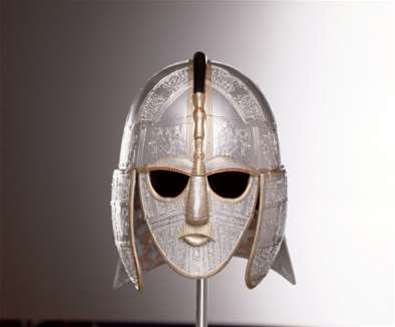
The room is dark, almost completely black. Edith Pretty sits in the gloom and near silence with a spiritualist in London. It’s 1936 and Edith is a middle-aged widow seeking comfort from the occult.
Edith and her husband, Frank, lived at Sutton Hoo in Suffolk for just eight years when Frank died, leaving Edith to grow ever more curious about the land they had moved to as newly-weds. There had always been a certain folklore surrounding the patch of Suffolk heath-land but then Edith had a vision, a ghostly encounter and decided she needed help to excavate the land. That’s what can happen when you see an Anglo-Saxon procession pass through your property!
Edith approached Basil Brown, who worked at a Museum in Ipswich, and he began work in earnest. At first, the excavation yielded slim pickings but in 1939, the largest part of the project began to unearth more than anyone had expected. The blueprint of an eighty foot ship lay in the ground; the wooden fabric of the vessel rotting away some time ago had deposited the nails that once fixed the timbers in place and rusty stains on the compacted, surrounding earth from other metal fixings.
Inside the space, where the ship had once provided a royal tomb, preserved for Brown and his colleague, Charles Phillips (University of Cambridge) to find, remained a treasure trove of over 250 artefacts including coins, gold buckles, weaponry and silver cutlery but the real prize was a full face helmet. This one of a kind find, along with the other discovered objects confirmed to the team that they were looking at an Anglo-Saxon settlement at Sutton Hoo, previously believed to be Viking.
The spoils of Sutton Hoo were so splendid, so unprecedented that the work was carried out under police guard, around the clock. It was, after all the richest ship burial ever found in Northern Europe. And it keeps on giving! More recently, Byzantine objects have been excavated and the armour of a warrior who was buried alongside his battle horse. And there may be more discoveries to be had since only two thirds of the area has been investigated.
The fascinating story has now been re-told, with the 'The Dig', book written by John Preston having been released in 2007 and the film of the same name, directed by Simon Stone and starring Ralph Fiennes, Carey Mulligan and Lily James in January 2021.